Watching the oxbow dry
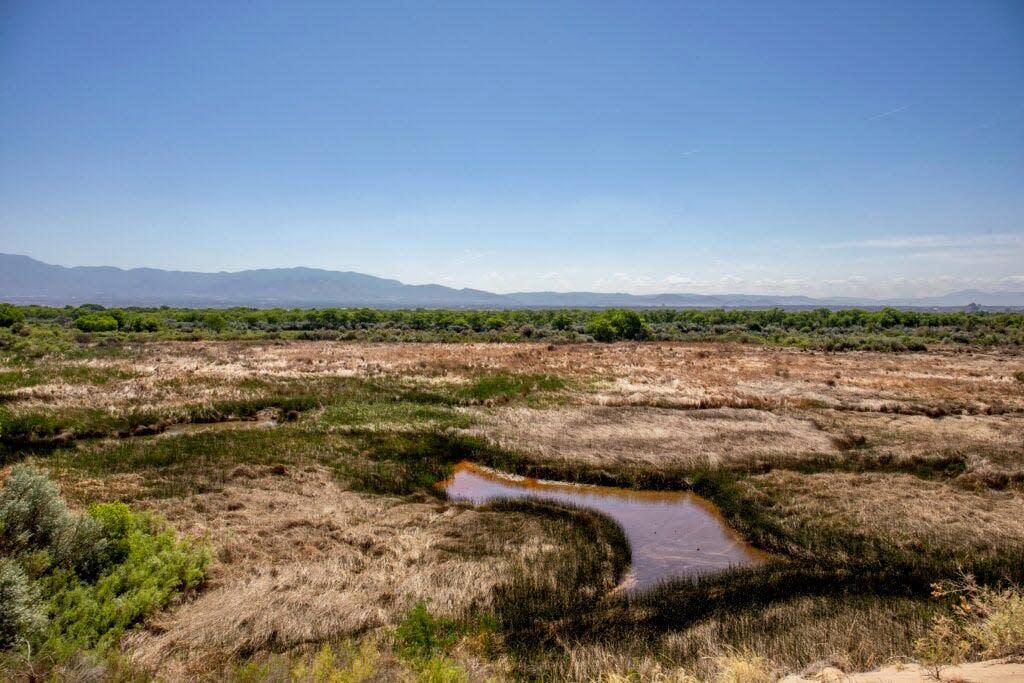
This story was originally published by Source New Mexico.
The Rio Grande is a silver thread ribboning its way through New Mexico, enhanced by a brocade of greenery. It roars to life through the tall pines, curves through the canyons carved by its steadfast course.
The river vertically bisects the entire state and touches 14 sovereign pueblos, sluicing into canals and creeping across fields.
In the lowlands, the bosque brush pops against beige grass and dun sand. It winds further still, its path a verdant mark against olive creosote and blue sage. It swells in the south in great catchments, stretching wide under skies, held back by the dams.
It also dries. Not every year, but most. Not always catastrophically, but more often so — and in 2022, worse.
“Drought and ever-increasing temperatures rob us of water at every stage,” said Dagmar Llewellyn, a hydrologist at the Bureau of Reclamation.
Direct interventions — like dams — outweigh global warming in reshaping the Rio Grande, said U.S. Geological Survey hydrologist C. David Moeser, but the loss of snow melt means a “regime change” for how the river is fed.
“We have climate change coming, and in order to reduce its impact, we need to think about how to reduce our footprints in this basin,” Moeser said.
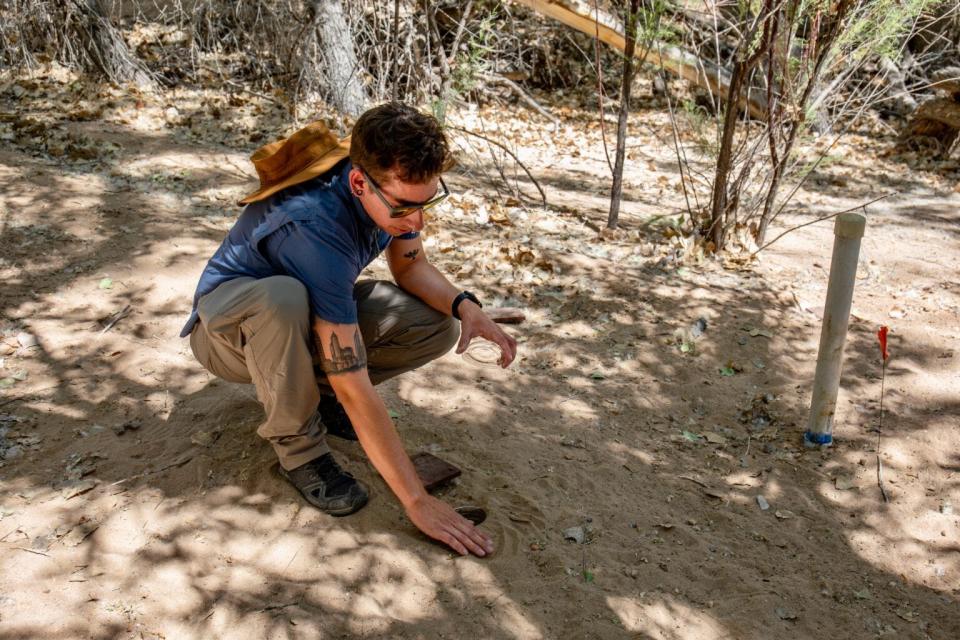
In the center of Albuquerque, there is a marsh, one of the last in the middle of the desert. Named for the U-curves of the river resembling a harness, oxbows are lakes and pools where a bend in the river is cut off. It’s a 40-acre wildlife refuge, the first owned and managed by the City of Albuquerque’s Open Space department.
Usually created by the natural meandering of the river, this bastion of marsh in the center of the city was a man-made unintended consequence. The U.S. Army Corps of Engineers used X-shaped jetty jacks, now overgrown, to straighten the course of the Rio Grande, and support the banks.
“The river used to run right here, eroding the bluff we’re standing on,” said Wes Noe, a graduate student in water resources at the University of New Mexico.
Stands of grass below the overlook barely move in the still summer morning, cicadas already droning. The water isn’t blue. It’s shallow here, some of it murky brown and algae-filled, other portions nearly a mustard yellow color in the shallows.
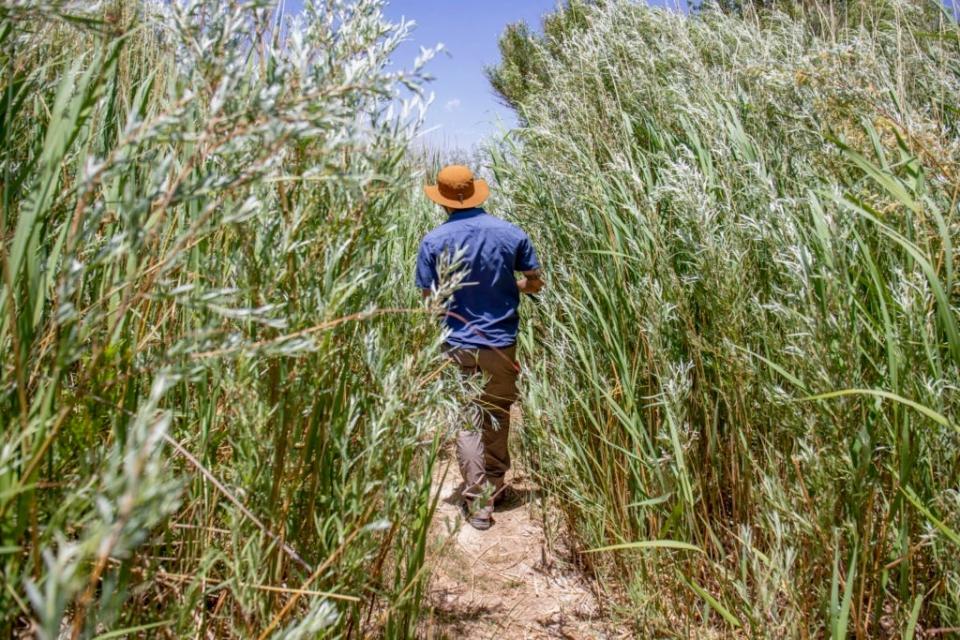
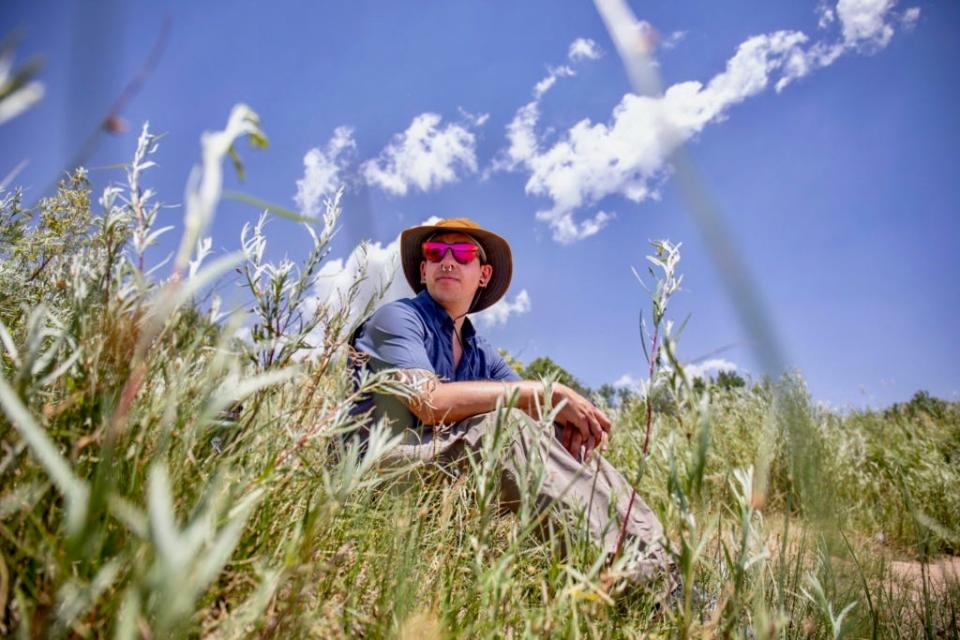
Some of the still ponds are choked by invasive grasses and sediment plugs, creating hot, shallow ponds. A beaver dam sits in deeper water, surrounding trees bearing the telltale signs of the inhabitants.
The oxbow is an important habitat for migratory birds, Noe said, who stop over to feed, rest and continue on miles-long journeys.
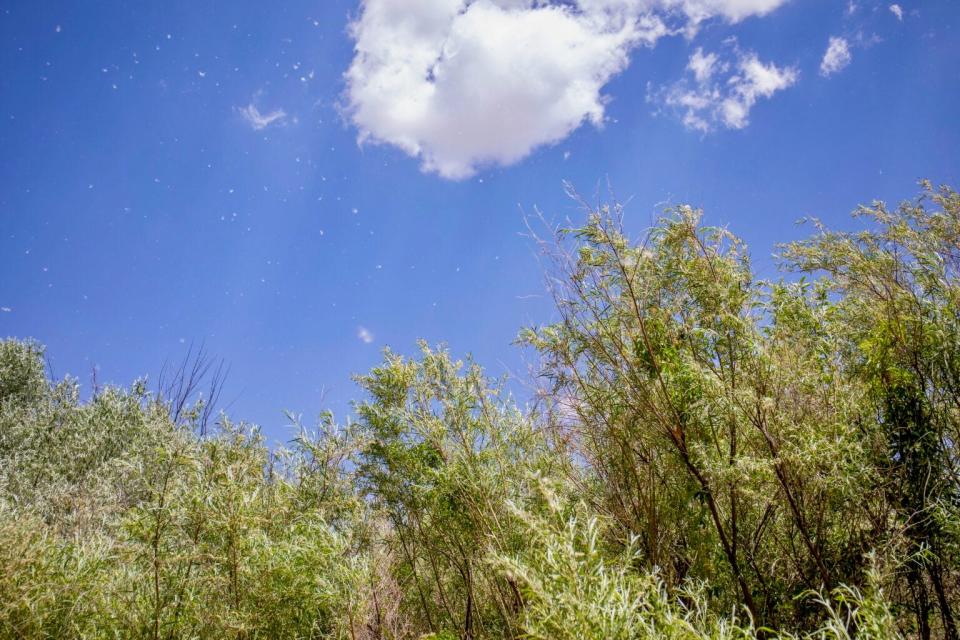
Outside the oxbow, at a fork of signs for federal, state and city agencies — the banks are thick with invasive species — slate-blue Russian olives and the frothy leaves of salt cedar, all enwrapped in the emerald vines of virginia creeper.
“We need some human input right here to cut back on some of this invasive species, or when you’re having sedimentation, and things are eroding,” Noe said, pointing out deep headcuts in the bluff left by runoff from the housing and roads.
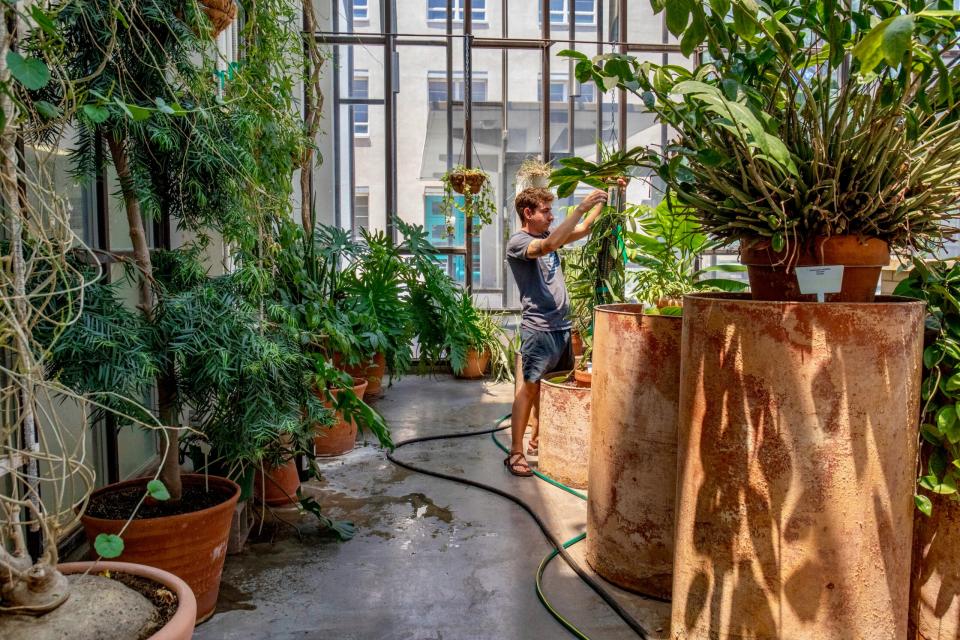
Watching the oxbow dry in 2021, watching blue waters shrink to smaller and smaller patches of brown ground, just muddy patches, cut deep, he said.
“I’m so deeply connected to the oxbow,” Noe said. “I literally grew up in Albuquerque, and I worked in the Bosque in my undergrad, and never once did I hear about the oxbow.”
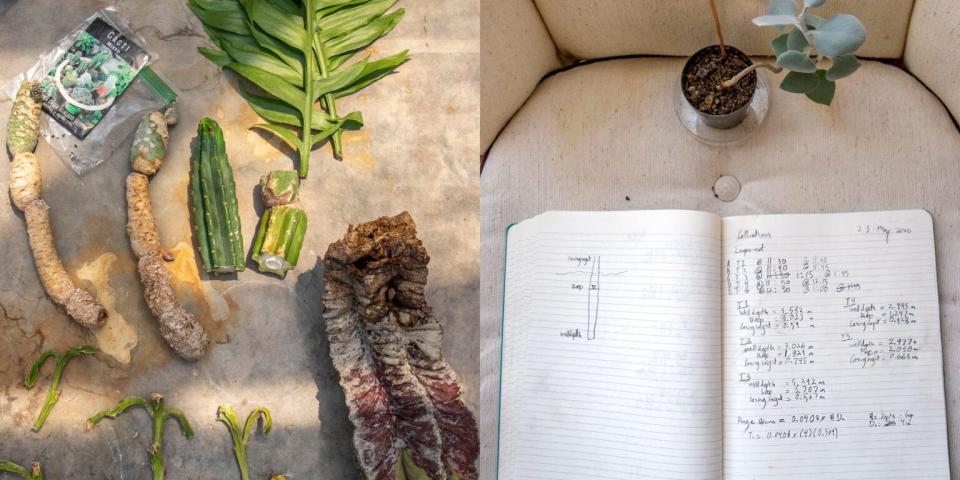
Danielle Prokop is a freelance reporter based in the Borderlands. This project was funded by a grant from the Water Desk and by States Newsroom, a network of nonprofit news organizations and home to Source NM.
More from this series:
This article originally appeared on Las Cruces Sun-News: Watching the oxbow dry

